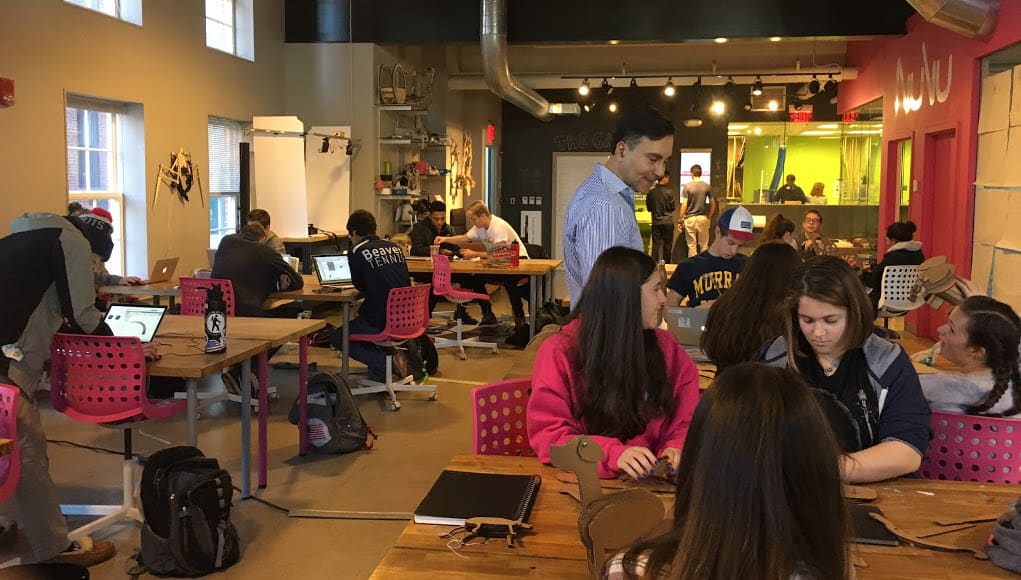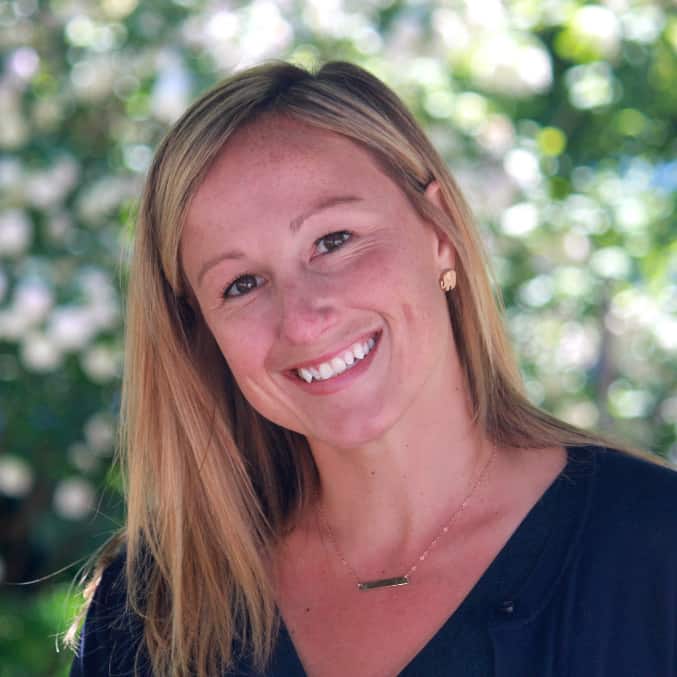Studio-Based Learning and Self-Directed Students at NuVu

Use a design process to solve complex challenges using creativity, critical thinking and collaboration. Producing real impact for real audiences. These are the critical components of the studio-based learning model at NuVu Studio (@NuVuStudio on Twitter and Instagram) an innovation microschool school between Harvard and MIT in Cambridge.
NuVu students work in studios with a coach (often leaders in their industry/field) to solve open-ended problems. The problems all have some type of real-world impact or are aimed at encouraging students to create a helpful solution.
“We want students to have experiences as they create these projects that are unlike anything they have ever experienced before. Their learning should feel original and challenge them to think of new ideas,” shared founder Saeed Arida.
The studio model that NuVu offers provides students with the opportunity to problem-solve through creating and building. The curriculum at NuVu is based on the architectural studio model. Students are presented with an open-ended topic and, within a two-week studio framework, they work collaboratively among themselves to create both a problem and a solution.
Studios are multidisciplinary and may require data analytics, robotics, coding, communication, fabrication, electronic other maker skills. Through these applied and integrated learning experience, students have the opportunity to create, make and build. At Nuvu, the product is important but it’s more about how you attack complex problems, incorporate feedback, and persevere to solutions.
On a recent visit, we observed three studios. One physics lab that spilled out into robot races in the lobby. The other two were analyzing data from walks around the historic neighborhood, one resulting in ethnographic and economic maps and the other building visual representations of the types and intensities of smells encountered (great examples of place-based learning).
3 Lessons from NuVu
1. Extended challenges. If we want true project-based learning, we have to be okay with students working for extended periods of time on skills and competencies. While this may be difficult for some schools to take on if they are serving hundreds of students, rethink how you can facilitate some projects that are less grade-driven and tied to the bell schedule. Students have time to prototype and iterate their products and designs until they feel confident it will help solve the problem or will please the audience or person they are working to create a solution for.
 Karen Sutton, Director of Operations said, “Extended challenges build resilience, resourcefulness and tenacity.”
Karen Sutton, Director of Operations said, “Extended challenges build resilience, resourcefulness and tenacity.”

2. Culture of trust and respect. On both visits to NuVu, students were self-directed and diligent. They certainly had some background in building and the time to learn the skills that they were applying, but overall they were trusted to be on task and working on their projects. Coaches and experts circulated to address questions and support students.
The picture below shows a system employed by NuVu where students can sign up to use tools and machines needed to complete their projects–totally student created and maintained.

3. Professional products. Students produce high-quality products and then showcase them in their online portfolios (a key tenet of high-quality project-based learning). They have a beautiful online platform to use and the tools (see image and video studio below) to use and share their work. Students receive feedback from experts, such as visual/media artists and designers, about how to craft and deliver great presentations and portfolios. Students clearly have a lot of pride in their work. (Check out some of the student projects.)

Eleven seniors recently exhibited their artwork at Kelvinside Academy in Glasgow, Scotland. The interactive installation immerses participants in a path of ferns that sway at the lightest touch (below with more on Instagram) Week trip. Work for month
 Extending Impact
Extending Impact
The middle and high school (what Sutton called the ‘test kitchen’) maintains tuition paying enrollment of 50-60 students. That typically includes 20 students each trimester from partner school Beaver Country Day.
Impact is extending worldwide through NuVuX, a set of education and consulting services (below) that build creativity, innovation and design within a school or organization.
One way NuVuX supports partner schools is through part or full-time fellows. NuVu trains fellows over the summer and places them in partner schools. The 16 current partners range from Woodstock Union High School in Vermont to All Saints Academy in Florida, to Karam House in Istanbul, Turkey. NuVu worked with one of our favorite schools, Odyssey STEM Academy in Santa Ana, California (see November trip report).
Add NuVu to your list of schools to visit. Like One Stone in Boise, we appreciate the community-connected design-focused extended challenges and student-centered learning environment.
For more, see:
- What’s Up With All the Design-Focused Schools?
- Six Must-Have School Spaces for Project-Based Learning
- Four Key Elements of 21st-Century Classroom Design
- Projects, Design Thinking and SEL Done Well at Milton Hershey School
Stay in-the-know with all things EdTech and innovations in learning by signing up to receive the weekly Smart Update.








0 Comments
Leave a Comment
Your email address will not be published. All fields are required.